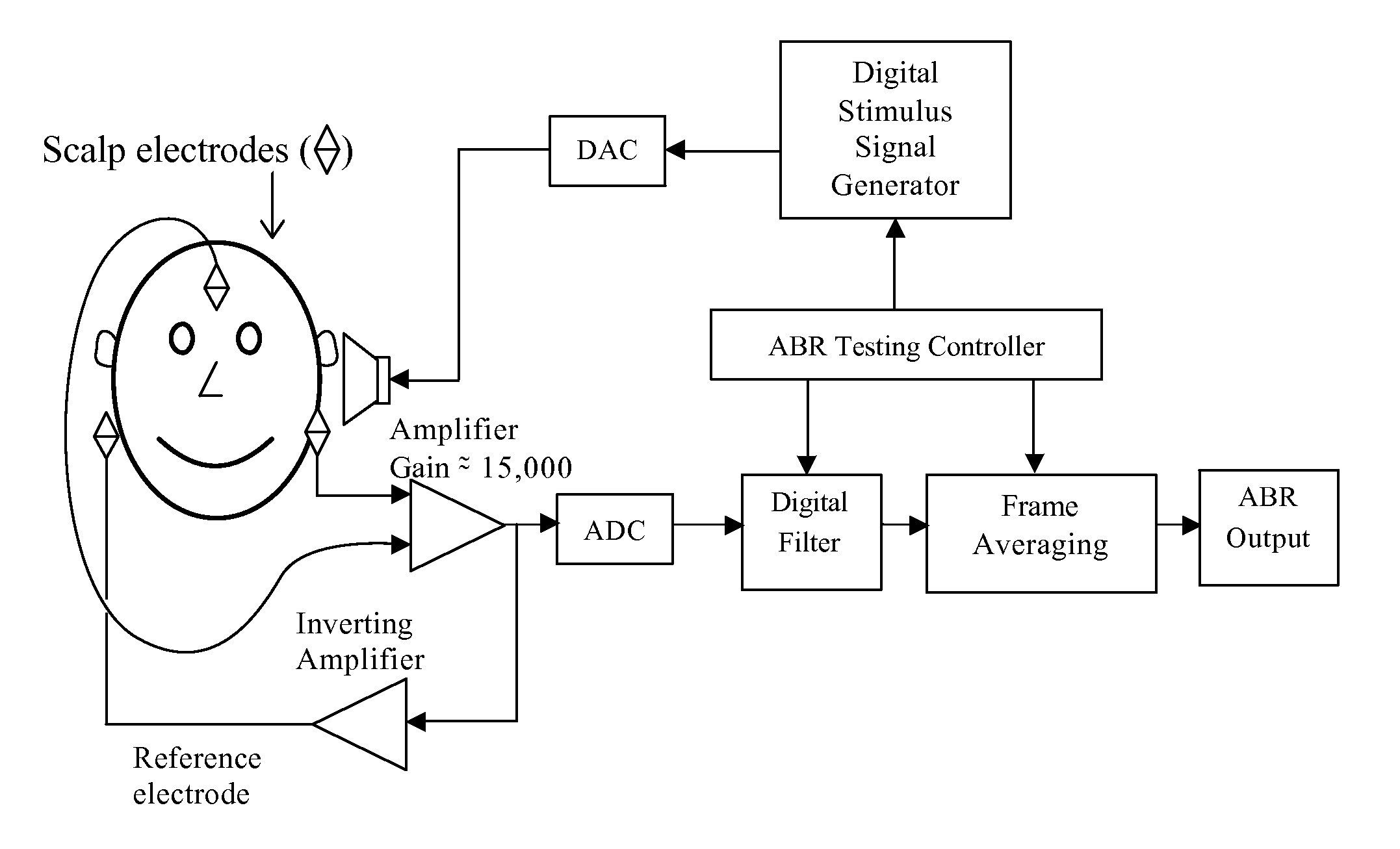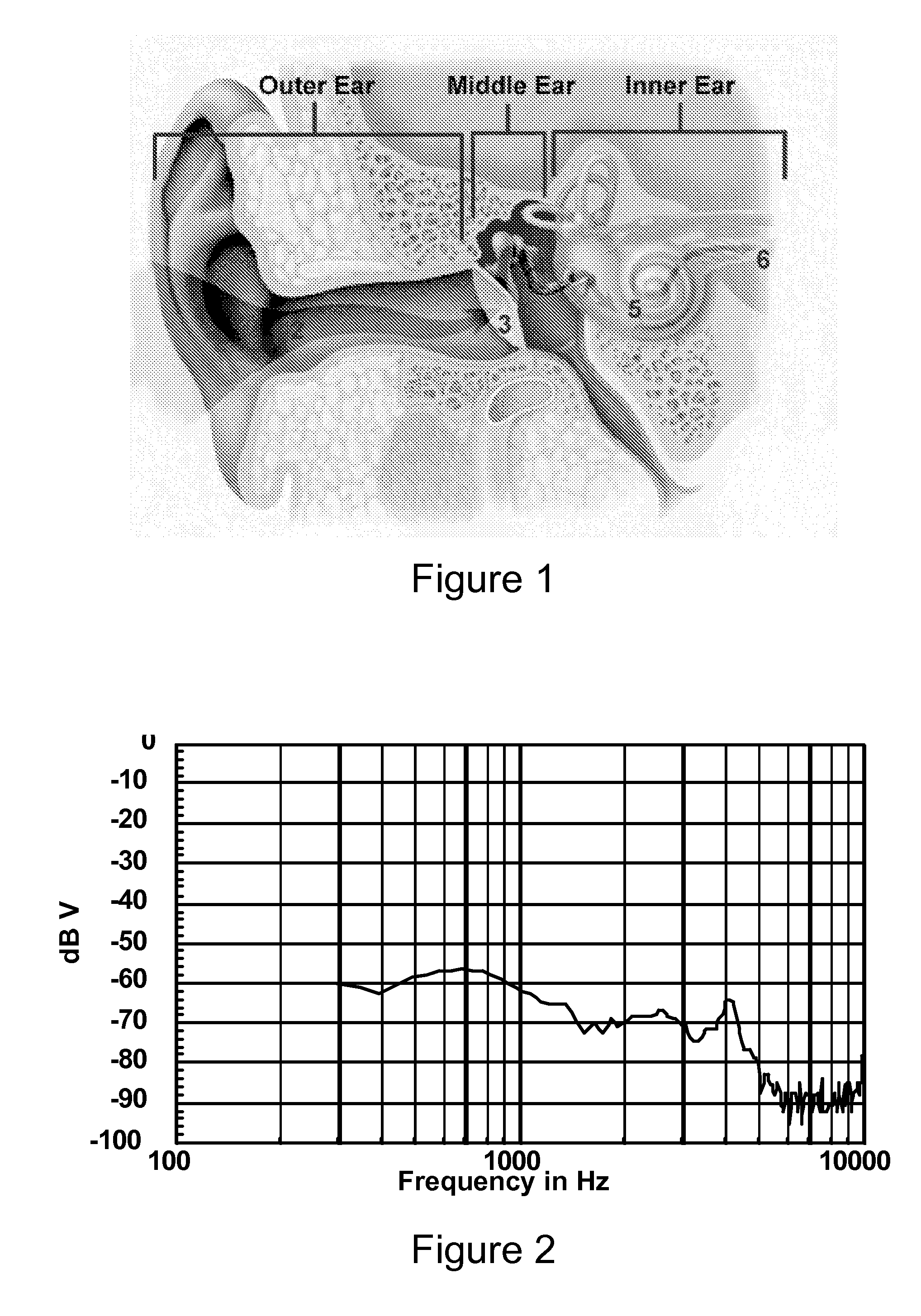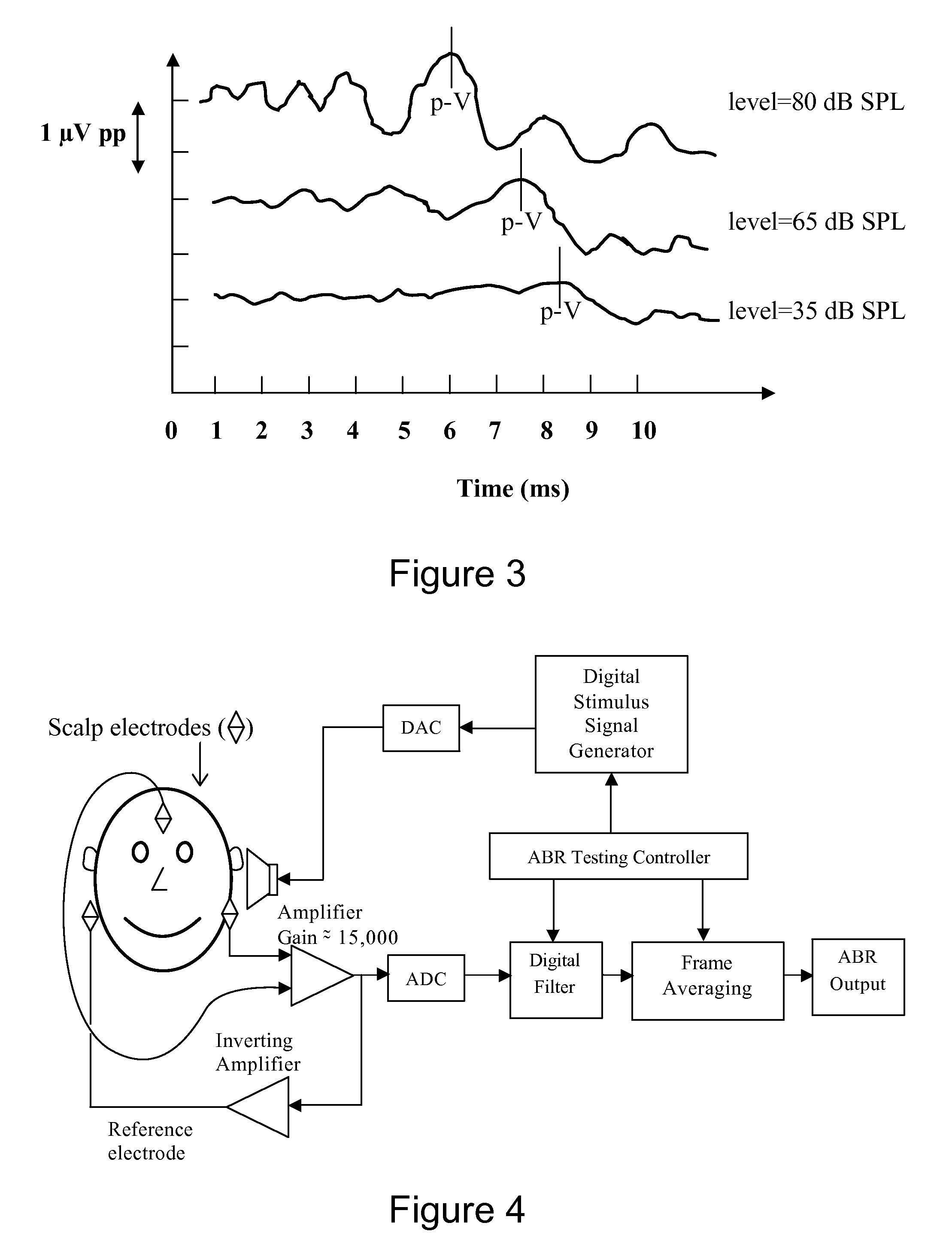Fast Wavelet Estimation of Weak Bio-signals Using Novel Algorithms for Generating Multiple Additional Data Frames
a biosignal and fast wavelet technology, applied in the field of fast wavelet estimation of weak biosignals using novel algorithms for generating multiple additional data frames, can solve the problems of affecting the application of today's medical technology, children can never acquire normal speech ability for the rest of their life, and hearing impaired children are often mistakenly labeled as mentally deficient, etc., to achieve faster estimation of key features of the underlying low snr signal, improve the quality of the averaged signal, and improve the effect of the averag
- Summary
- Abstract
- Description
- Claims
- Application Information
AI Technical Summary
Benefits of technology
Problems solved by technology
Method used
Image
Examples
Embodiment Construction
[0113] A typical commercial ABR system as found in the prior art to collect data presents clicks into the ear canal and records data from the scalp electrodes. The data is filtered and then averaged together in frames of approximately 15 ms following the stimulus presentation. Existing commercial ABR systems do not have a capability of recording long sessions of raw data—unfiltered and unaveraged. To investigate the performance of the novel algorithm, several thousand frames of unprocessed data (i.e., N=8,192) were needed to be recorded for later analysis. The objective was that exactly the same data was analyzed for different processing schemes and parameters. A custom-built system was used for data acquisition and storage. This system was built by Everest Biomedical Instruments Company (Everest), a designer and manufacturer of commercial OAE and ABR test equipment. The system was built from a combination of clinical ABR components and high quality laboratory data acquisition equip...
PUM
 Login to View More
Login to View More Abstract
Description
Claims
Application Information
 Login to View More
Login to View More - R&D
- Intellectual Property
- Life Sciences
- Materials
- Tech Scout
- Unparalleled Data Quality
- Higher Quality Content
- 60% Fewer Hallucinations
Browse by: Latest US Patents, China's latest patents, Technical Efficacy Thesaurus, Application Domain, Technology Topic, Popular Technical Reports.
© 2025 PatSnap. All rights reserved.Legal|Privacy policy|Modern Slavery Act Transparency Statement|Sitemap|About US| Contact US: help@patsnap.com



